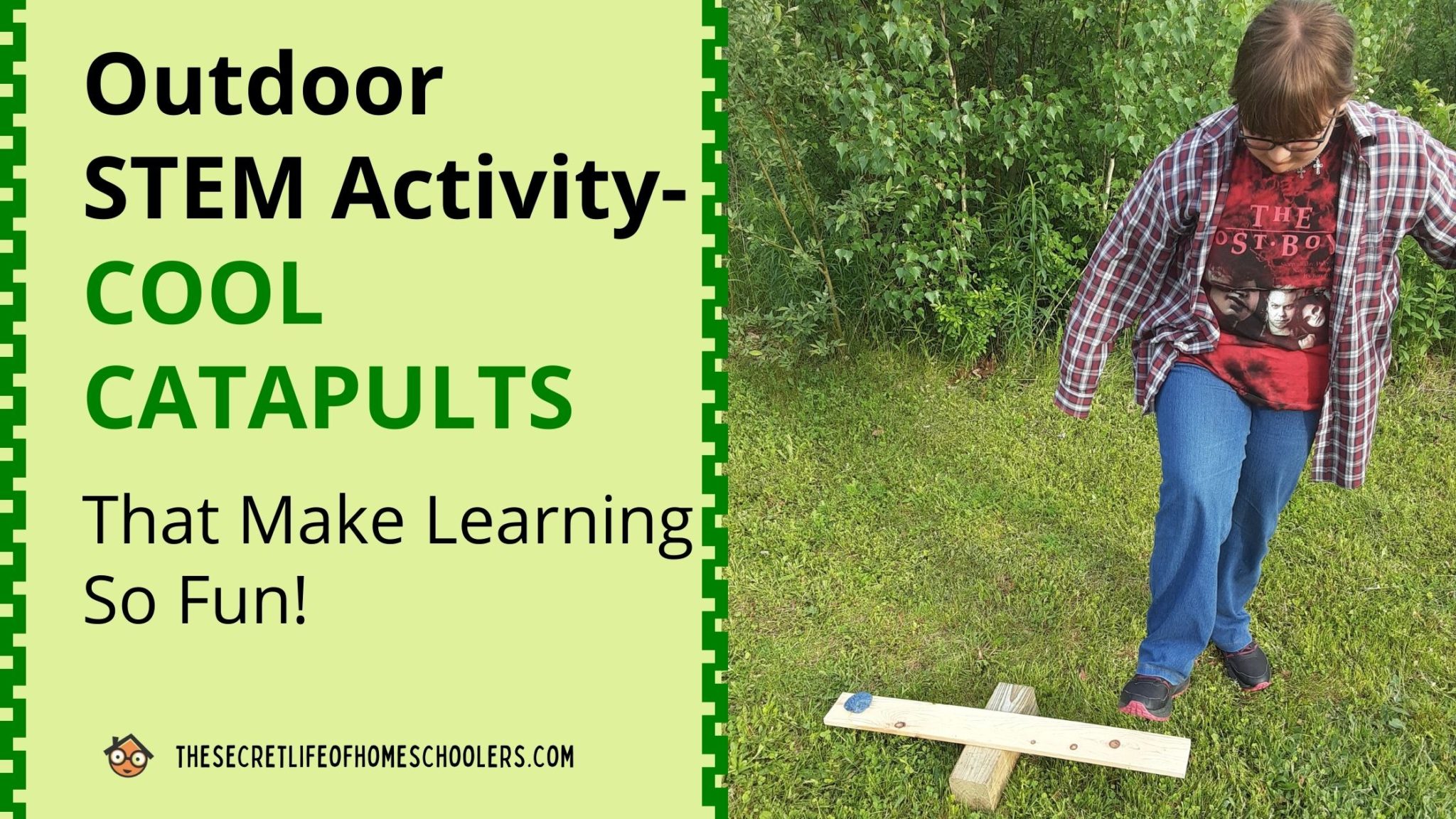I aim to find ways to make learning fun through an excellent hands-on curriculum or amazing activities. I especially love finding activities and projects that are so fun that kids don’t even realize they are learning. That is where this outdoor STEM activity using catapults comes in.
Years ago, when I was a Den Leader in Cub Scouts, I did this fun outdoor STEM activity.
What little boy doesn’t like launching catapults?!
It was a great first meeting activity; the boys didn’t realize they were learning some cool science concepts.
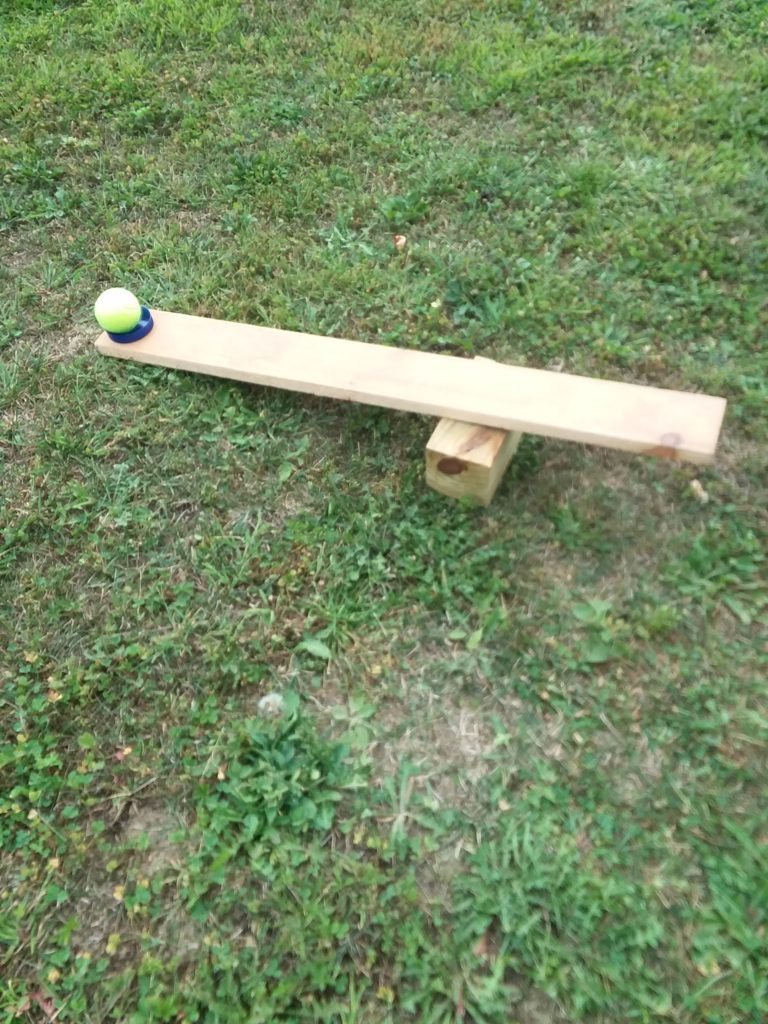
So, I decided to share this fun outdoor STEM activity with you. After all, we moms need to have an arsenal of fun activities in our back pocket to spice up learning or a boring day.
Simple Outdoor STEM Activity: How to Make a Catapult
When it comes to teaching, I like simple and easy for kids. Why make something complicated and challenging if it can be done in a simple and fun way? After all, kids will be more engaged and want to do it again and again.
For this outdoor catapult, I stuck with simple. I used the basic lever and fulcrum concept. If you remember back to physics, it is a basic simple machine. You may also remember studying other simple machines, like the pulley, inclined plane, wheel, etc.
Well, this is your basic lever.
So, let’s get started!
Materials for Catapult
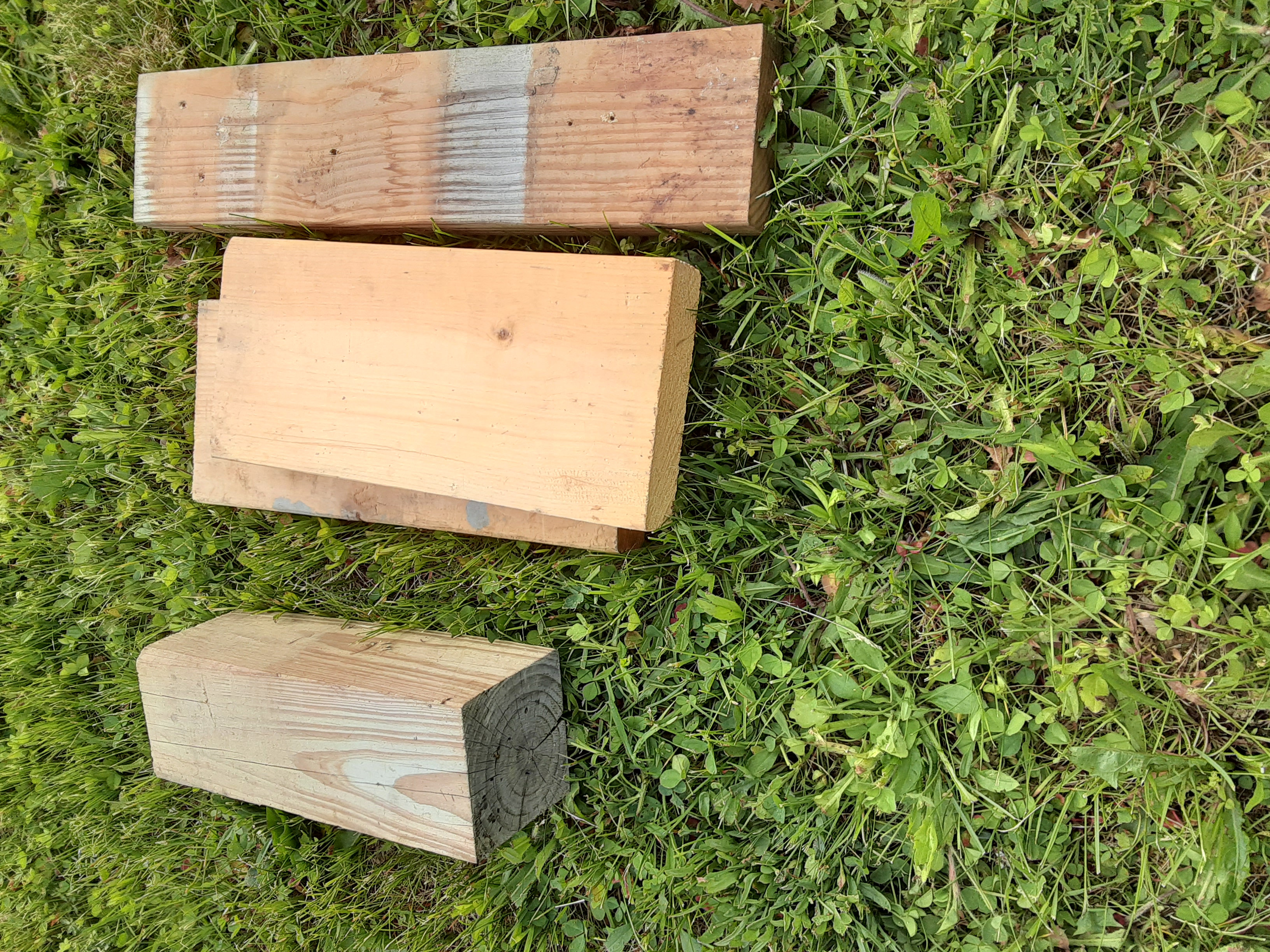
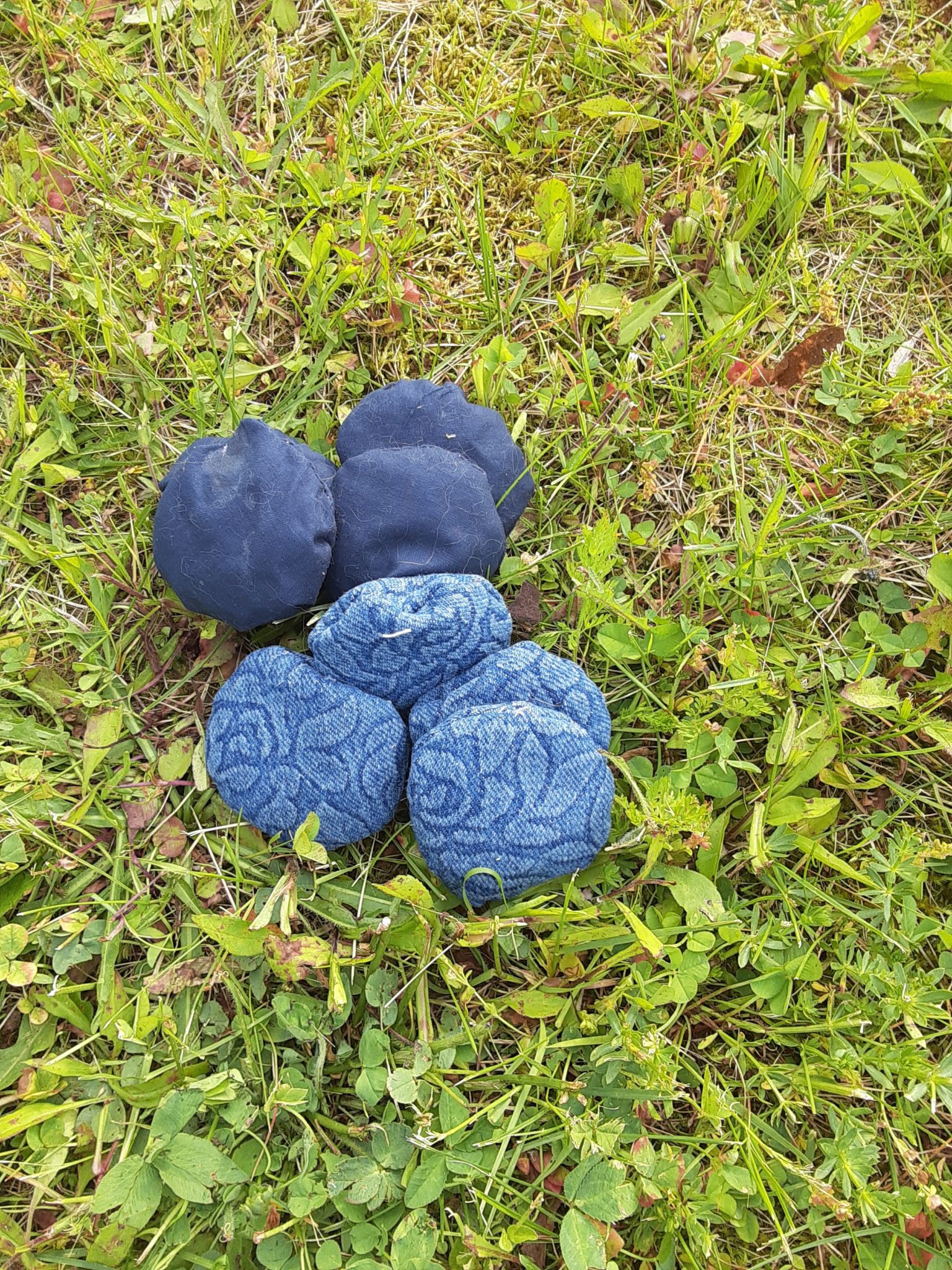
For this outdoor STEM activity, you need the following:
- 1X4 board (~3 feet)
- Short 4X4 board (~12” or less) or 2-3 2×4 wood pieces to stack
- Objects to launch like bean bags
- Rope, jump ropes, hula hoops, spray chalk, etc. (optional)
Directions and Tips for Catapults
Okay, the directions are pretty self-explanatory.
- Place the smaller 4X4 board (or stack of 2X4s) down. This is your fulcrum (the piece your board sits on and pivots).
- Lay the 1X4 (or similar) board across the 4X4. This is your lever. It will look like a seesaw.
- Place a bean bag or other items to launch on the end that is touching the ground.
- Stomp on the end of the board that is in the air and launch your item.
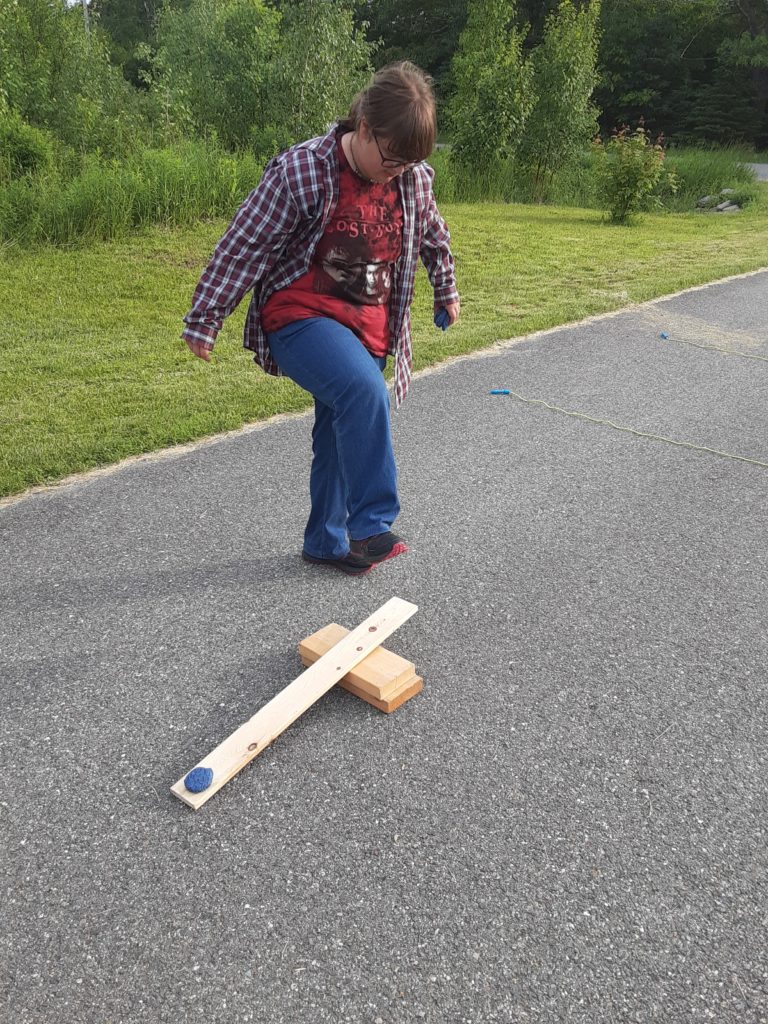
It is that simple. Kids will need to experiment and adjust the board (lever) on the fulcrum to see how it will launch best.
Variations on this STEM Activity:
Ball Launching Catapult
As you can see in the picture of the catapult with the Cub Scouts, I hot glued a peanut butter or mayonnaise cover on one end. This was so it could hold a tennis ball. The cap held the ball in place until we were ready to launch.
Catapult Game
Another variation is to make this into a game. I set up jump ropes and made target lines. The further the line, the more points you could earn. I used jump ropes, but you could use hula hoops, rope, sticks, etc., to mark out lines. I’m sure even the spray chalk or chalk (if on pavement) will work.
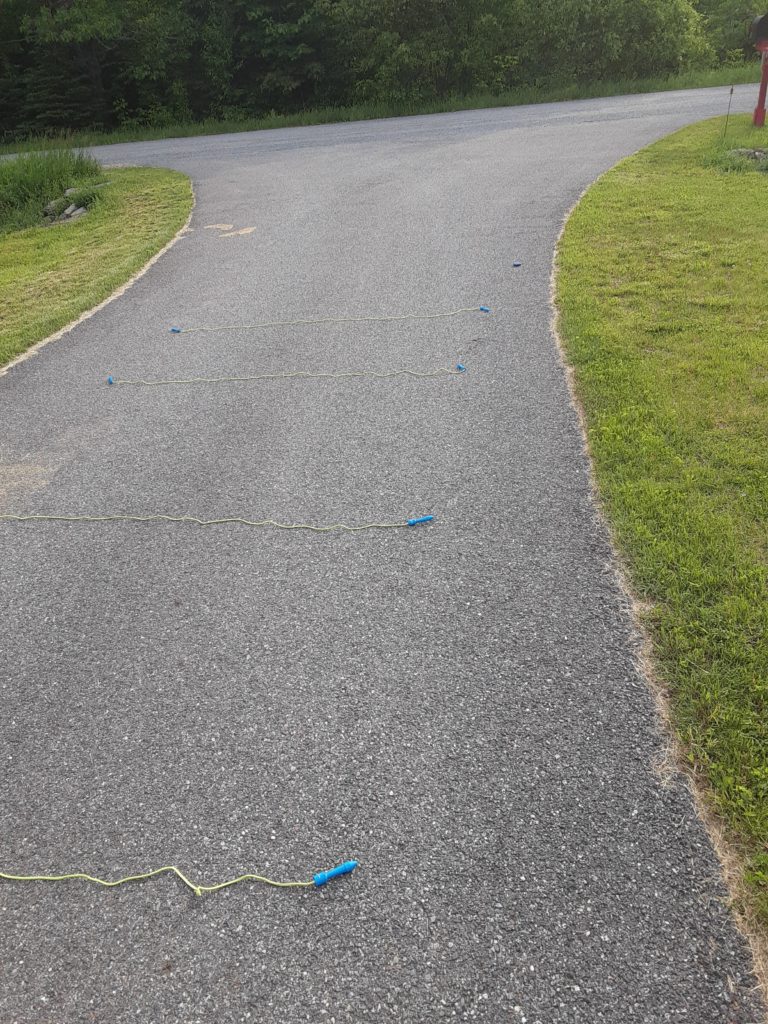
You could also have the kids try and launch a bean bag at each line. This will make kids work on how hard they stomp on the board to get it to various distances.
Experiment with launching different objects- objects of varying size and weight. It would be fun to note which items go further.
Other Tips
I experimented a bit with this STEM activity. Here are some things I learned:
- I found that using a 2X4 for your lever was too heavy, making it hard to launch items.
- Setting up on the grass works fine, but the paved driveway works better.
- You can stack 2X4s for your fulcrum, but it worked a little better in the grass than on pavement. On the pavement, the boards easily slid off each other. Overall, stacking boards doesn’t work as well as one thick board.
Here is one of the videos of us launching the catapults.
The Science Behind This Outdoor STEM Activity
So, here is where the educational part comes in. This is my favorite part. I love showing kids the science behind simple and fun activities. I find it so cool.
In school, physics sounded so scary. Now I see how fun physics can be, and I see all its practical uses of it.
As mentioned, this particular catapult is a simple machine. It is a lever. We typically use levers to lift things, especially heavy items. For example, we may use a lever to lift a heavy object off the ground.
Levers also make fun toys like a seesaw on a playground. Or, in this case, we turn a simple lever into a great outdoor STEM activity- a catapult.
The science involved in catapults is PHYSICS.
When it comes to catapults, you have many different scientific concepts.
- Kinetic energy (Energy released as a projectile is launched)
- Gravity and friction (Gravity is the force placed on the object, and air resistance (friction) affects the distance the thing will go)
- Load and force– You set your load (bean bag) on one end and use a force (your foot stomping) to lift or launch the item.
If you have some really big kids (teenagers), you can get into the trajectory and how the arc is a parabola which brings in a whole lot of math.
In this case, I didn’t want to get into math formulas. I think this fun outdoor STEM catapult is excellent for:
- Discussing levers (parts of a lever and the three classes of levers).
- Experiment with how much force is needed to launch an item at a target.
- Discuss kinetic energy.
- Look at how gravity, friction, and size/weight of an object impact how far an item will go.
- Use basic math to measure how far an item is launched.
See, isn’t science cool?!
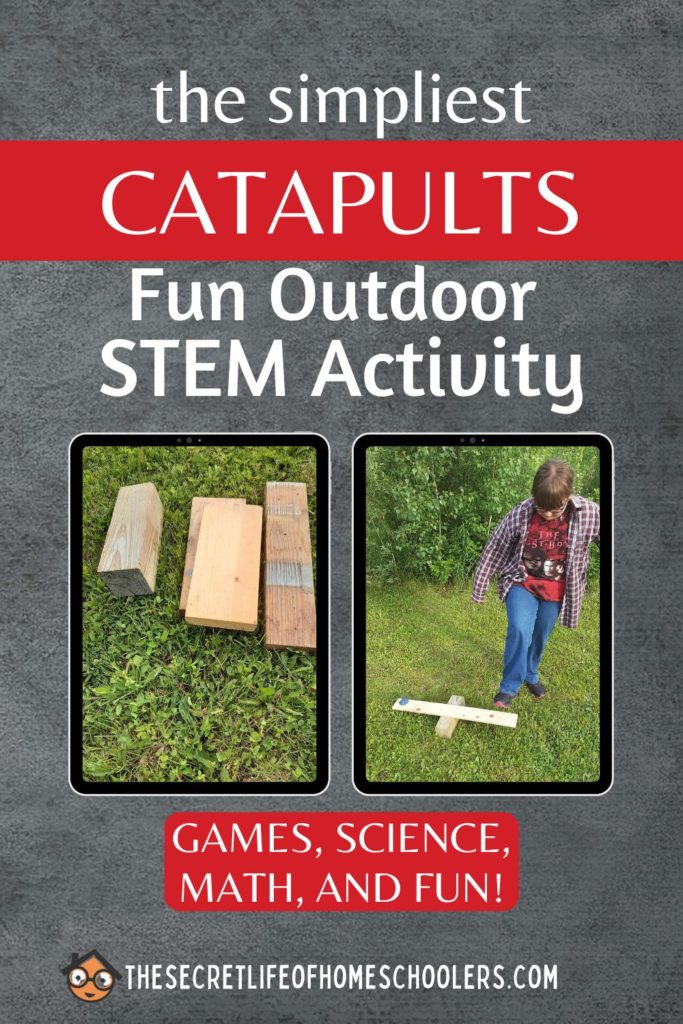
Math Too!
If you want to add in some math, you can easily add in measurement and angles. For math you can:
- Measure how far an object was propelled through the air.
- Make graphs of results.
- Find the average distance after several trials or among other people.
- Measure the angle of the catapult, and see what angle of the lever works best.
- If you have older kids, you can follow this link that talks about trajectory to get into more complicated math.
Final Thoughts on This Outdoor STEM Activity
Learning is more fun when kids get involved and see real-life applications to the things you are learning. You don’t need to make this a physics lesson, though.
Young kids will have fun playing around with how much force to apply, where to place the board in relation to the fulcrum, and such.
Later, while doing science (even in a few years), you can say, “Hey, remember when we did catapults? Well, this is a simple machine….” Then when you are explaining the different concepts in physics, they have something meaningful to connect the information to. 😉
So even if you want to play around with catapults for a fun outdoor STEM activity, your kids are still learning something without realizing it.
Interested in more outdoor STEM? You might want to check out:
Happy Homeschooling!

